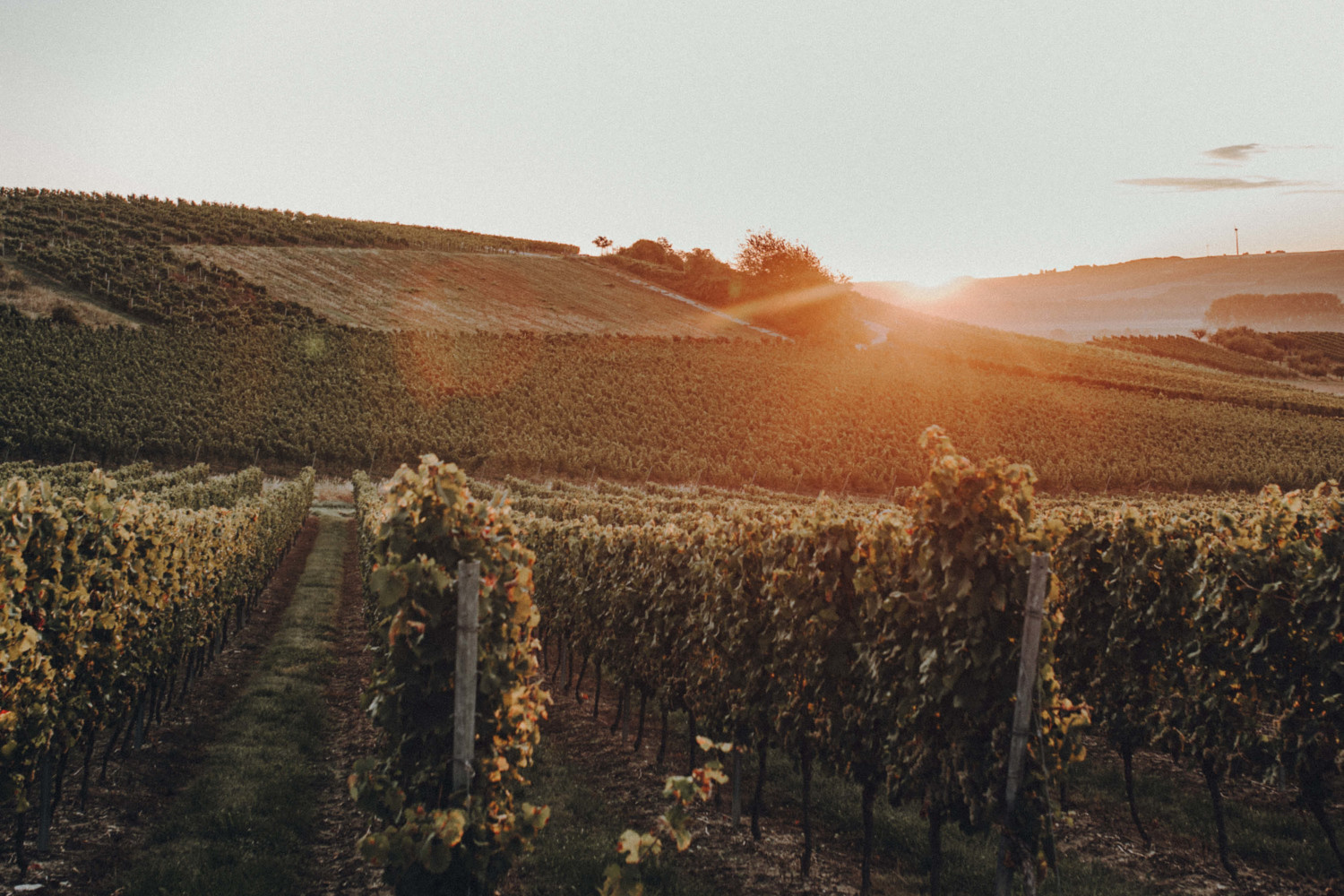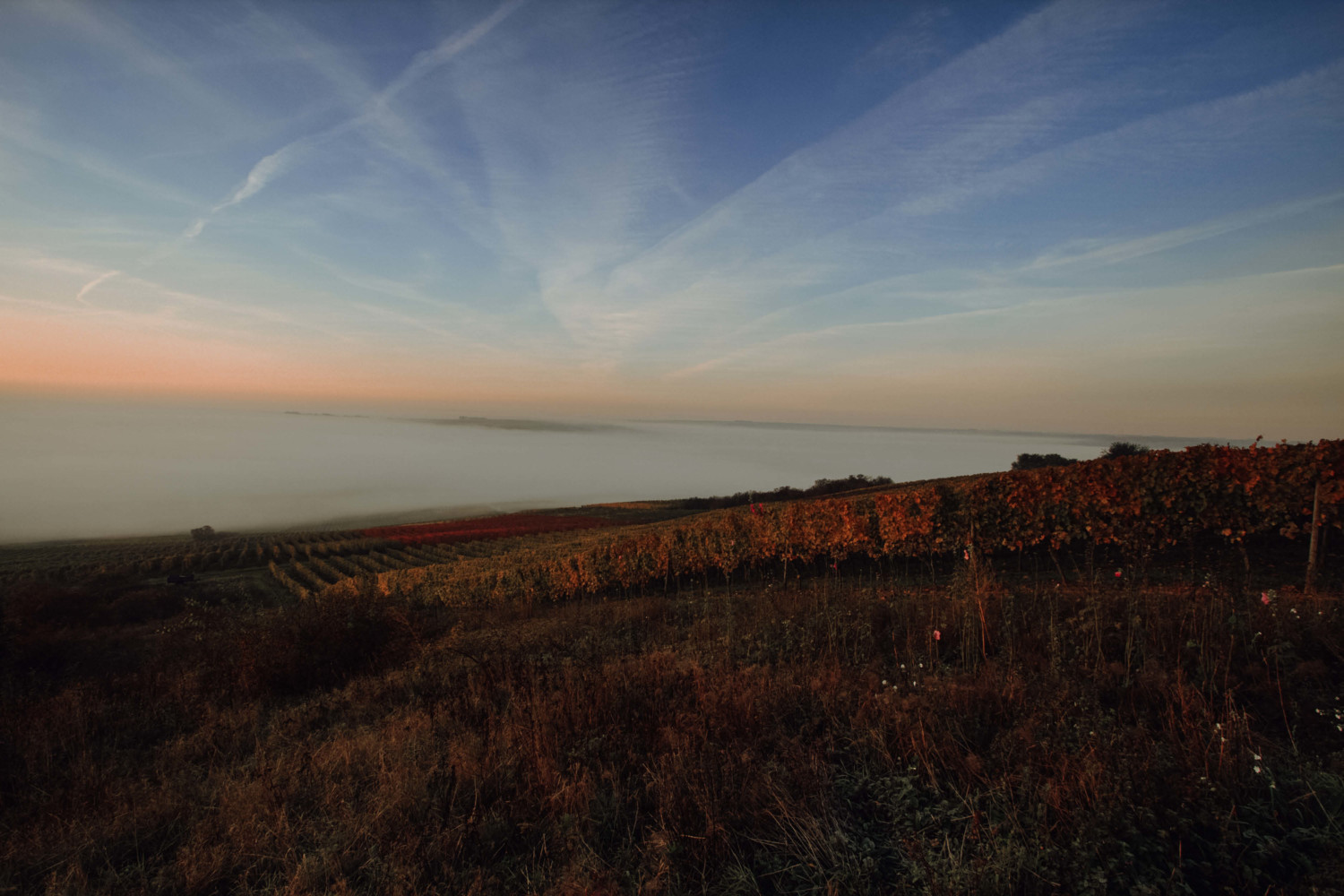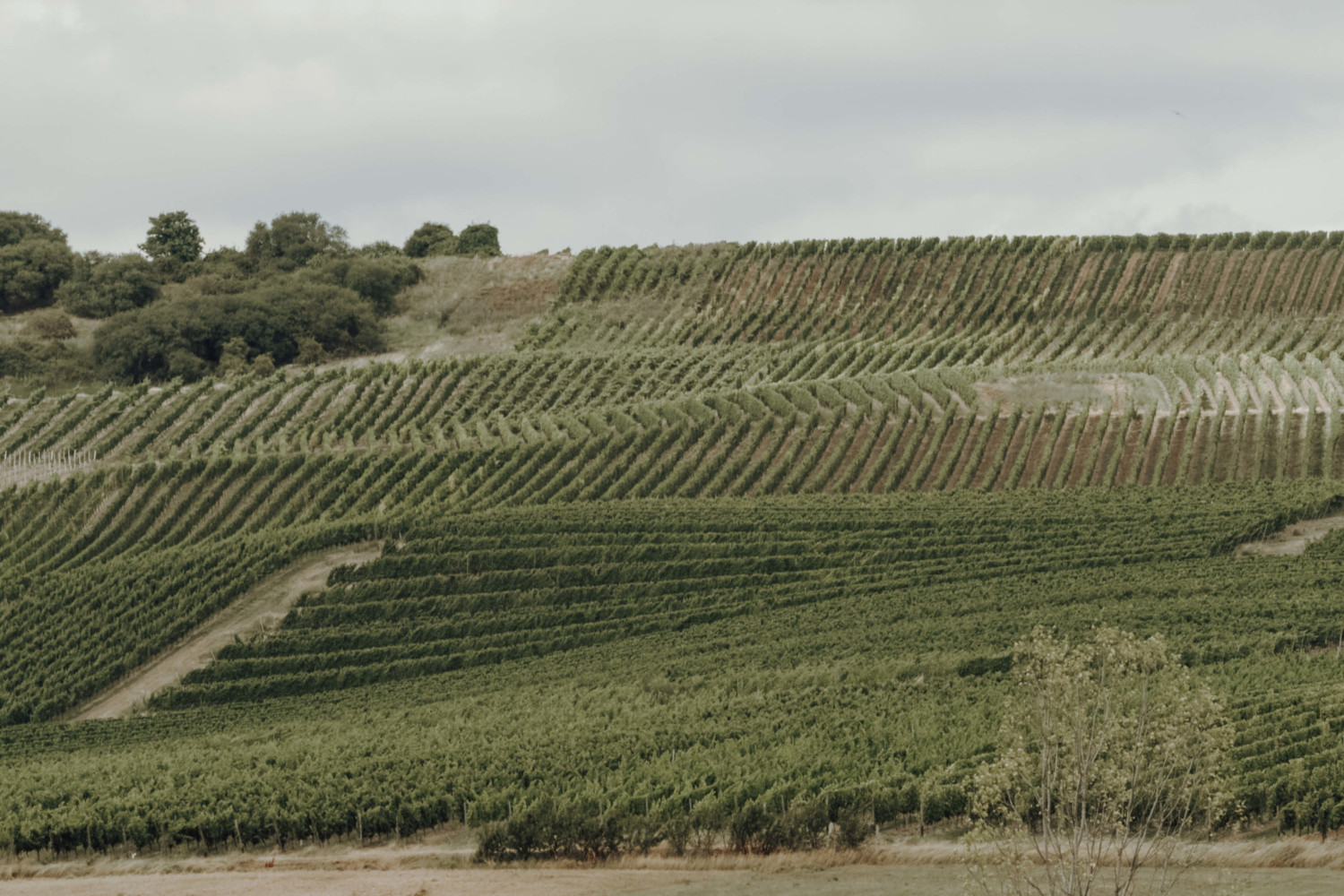Selztal | Selz Valley
Rough diamond from ancient times
Rough diamond from primeval times
Selz Valley
The intensive manual work and respect for the natural conditions contribute to showing the raw treasure of the Selz Valley in its most beautiful form.
The Selz Valley is a special place on earth. The Selz is the lifeline of Rheinhessen. It reaches from Donnersberg in the south right through Rheinhessen to the north end at river Rhine and unites people and winegrowers. With the highest hills in Rheinhessen, Essenheim offers an impressive panorama of landscape.


The Selztal impresses with its intensive limestone soil from the maritime times of the ancient sea. Corals, shells, tower snails and shark teeth bear witness to this era. The climate in the north of Rheinhessen suits perfectly to growing vibrant white wines with an elegant fruit. The cool nights ensure highly aromatic grapes and the rough wind in the Selz Valley always leaves a touch of fresh acidity on the palate. Due to the intensive manual work and staggered harvest, only very ripe grapes are selected for our fascinating wines.
Essenheim
Origin
Our hometown Essenheim is based in the very north of Rheinhessen, high above the Selz. Located between vines. Vines and wine have been grown around the village since Roman times.
Located between vines
ESSENHEIM
Our wines are characterized by the long ripening period on the vine until the last grapes are usually harvested in November. The distinctive, limy soil and the cool climate emboss our wines: immediate presence on the palate, gripping saltiness, stimulating fruit, deep body, long finish.
Particularly intensive limestone soils can be found in Essenheim. The lime marl in the middle of the slope offers optimal conditions for our Burgundy vines whereas the playful Riesling develops its full strength on the barren limestone at the top of the slope.

Unique soils
Its origin is important for the quality of a wine. The soil where the vines grow is the base of life and manages nutrient supply, water balance and temperature. Limestone soils with heavy clay, barren rock or solid marl characterize our terroir and give the wines their extraordinary character.

ESSENHEIM
LIMESTONE
Limestone | Terra Fusca
Tertiary marine deposits of a calcareous algal reef, weathered to brown loam
Soil characteristics
Shallow to medium deep, very limy, very stony, brown loam soil, low storage capacity for plant-available soil water, nutrient-rich, calcareous, good ventilation, good heatability, limited root penetration
- Geological era: Tertiary
- Rocks: Limestone, brown loam
- Soil: Terra fusca
- Percentage of total area in Rheinhessen: 7 %
Wine characteristics
Fruity, full-bodied, pleasant opulence, potential, maturing time necessary, smoky notes, gentle acidity, mango and apricot, tension, melting, rich complexity
- ESSENHEIM Riesling Limestone
- ESSENHEIM Pinot Noir Limestone
ESSENHEIM
Marl
Marl | Pararendzina
Calcareous clayey deposits of the Teritarian Sea
Soil characteristics
Deep, calcareous clay soil with a high proportion of swellable clay, lower storage capacity for plant-available soil water, limited water permeability and aeration, rich in nutrients, very limy, moderately warm, difficult for roots to penetrate
- Geological era: Tertiary
- Rock: Clay marl
- Soil: Pelosol
- Percentage of total area in Rheinhessen: 9 %
Wine characteristics
Full-bodied, dense, rich, moderate acidity, creamy. Expressive, ripe, mango, honeydew melon, apricot. Less minerality, more fruity, full-bodied persistence
- ESSENHEIM Grauer Burgunder Kalkmergel

Treasures
Great vineyards - great wines
Every wine comes from a vineyard with its special conditions: wines with a distinctive character.
vineyards sites
TEUFELSPFAD, BLUME, AM KLOPP

ESSENHEIM
TEUFELSPFAD
Salty and vibrating
The Teufelspfad is a long, steep vineyard slope. The vines are exposed to the wind of the Selz Valley and the soil changes from intense limestone (Riesling) at the hillside to nutrient-rich lime marl (Burgundy) and sandy loess (aromatic varieties & red wines) in the valley.
The different grape varieties grow in the right soil and produce intense, aromatic wines.
- District: Essenheim
- Vineyard: 98 hectares
- Soil: limestone, marl
- Sea level: 120-240 m
- Exposition: south-east to south-west
Single-vineyard wine
- TEUFELSPFAD Riesling
- TEUFELSPFAD Grauer Burgunder
- TEUFELSPFAD Spätburgunder
ELSHEIM
BLUME
BLUME terrace „Favorite Vineyard“
The location got its name from a flower-rich or a high-yield area (Middle High German blum = yield)
The vines in the BLUME grow in a hot southwest basin, protected from the harsh wind of the Selz Valley.
The soil is characterized by strong, tertiary marl. The high lime content can already be guessed from the number of snails in spring and the many fossils from the primordial sea. A soil that offers everything the vine needs.
Due to the heat in the BLUME, the vineyards are always harvested at the beginning of the harvest.
- District: Elsheim
- Vineyard: 64 hectares
- Soil: Lime marl
- Sea level: 120-210 m
- Exposition: South - Southwest
Single-Vineyard wine
- BLUME Riesling
- BLUME Spätburgunder


ESSENHEIM
KLOPP
Cool, Barren, Fascinating
At the Klopp, the quarry, the stones for the houses in Essenheim used to be cut from the barren rock.
High above the Selz, at the head of the slope, is the location "Am Klopp": our highest vineyards, grown on pure, reddish limestone.
The vines are exposed to the wind and ripen very late. The barren limestone gives the wines their special flavor and intensity. The grapes are always harvested at the end.
- District: Essenheim
- Vineyard: 17 hectares
- Soil: Limestone
- Sea level: 180-240 m
- Exposition: South
Single-vineyard wine
- KLOPP Grauer Burgunder
